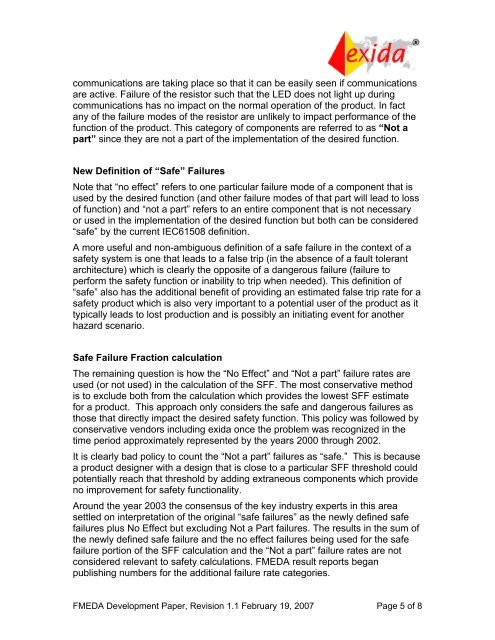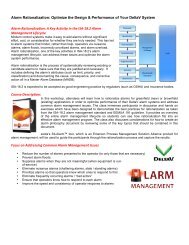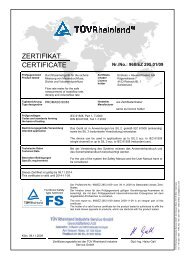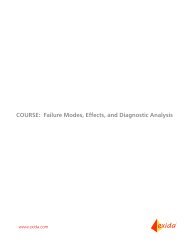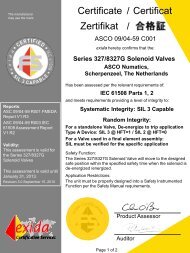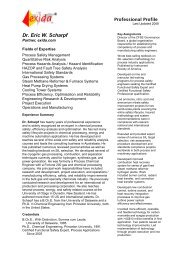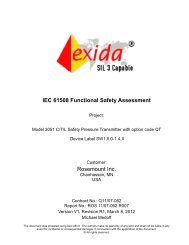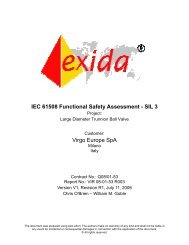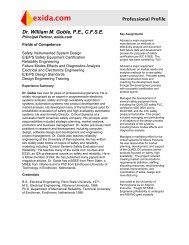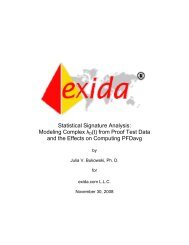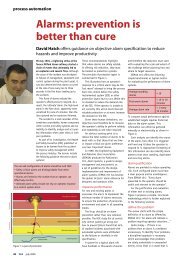FMEDA â Accurate Product Failure Metrics - Exida
FMEDA â Accurate Product Failure Metrics - Exida
FMEDA â Accurate Product Failure Metrics - Exida
- No tags were found...
You also want an ePaper? Increase the reach of your titles
YUMPU automatically turns print PDFs into web optimized ePapers that Google loves.
communications are taking place so that it can be easily seen if communicationsare active. <strong>Failure</strong> of the resistor such that the LED does not light up duringcommunications has no impact on the normal operation of the product. In factany of the failure modes of the resistor are unlikely to impact performance of thefunction of the product. This category of components are referred to as “Not apart” since they are not a part of the implementation of the desired function.New Definition of “Safe” <strong>Failure</strong>sNote that “no effect” refers to one particular failure mode of a component that isused by the desired function (and other failure modes of that part will lead to lossof function) and “not a part” refers to an entire component that is not necessaryor used in the implementation of the desired function but both can be considered“safe” by the current IEC61508 definition.A more useful and non-ambiguous definition of a safe failure in the context of asafety system is one that leads to a false trip (in the absence of a fault tolerantarchitecture) which is clearly the opposite of a dangerous failure (failure toperform the safety function or inability to trip when needed). This definition of“safe” also has the additional benefit of providing an estimated false trip rate for asafety product which is also very important to a potential user of the product as ittypically leads to lost production and is possibly an initiating event for anotherhazard scenario.Safe <strong>Failure</strong> Fraction calculationThe remaining question is how the “No Effect” and “Not a part” failure rates areused (or not used) in the calculation of the SFF. The most conservative methodis to exclude both from the calculation which provides the lowest SFF estimatefor a product. This approach only considers the safe and dangerous failures asthose that directly impact the desired safety function. This policy was followed byconservative vendors including exida once the problem was recognized in thetime period approximately represented by the years 2000 through 2002.It is clearly bad policy to count the “Not a part” failures as “safe.” This is becausea product designer with a design that is close to a particular SFF threshold couldpotentially reach that threshold by adding extraneous components which provideno improvement for safety functionality.Around the year 2003 the consensus of the key industry experts in this areasettled on interpretation of the original “safe failures” as the newly defined safefailures plus No Effect but excluding Not a Part failures. The results in the sum ofthe newly defined safe failure and the no effect failures being used for the safefailure portion of the SFF calculation and the “Not a part” failure rates are notconsidered relevant to safety calculations. <strong>FMEDA</strong> result reports beganpublishing numbers for the additional failure rate categories.<strong>FMEDA</strong> Development Paper, Revision 1.1 February 19, 2007 Page 5 of 8


